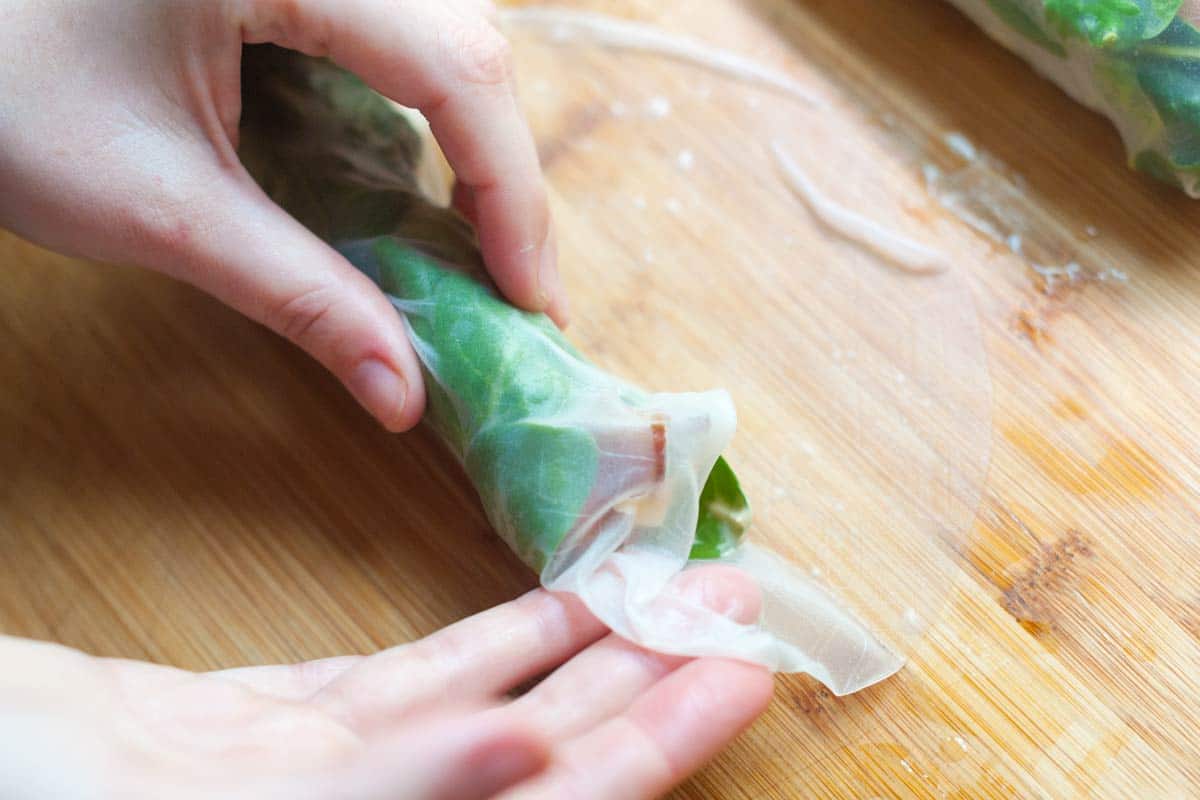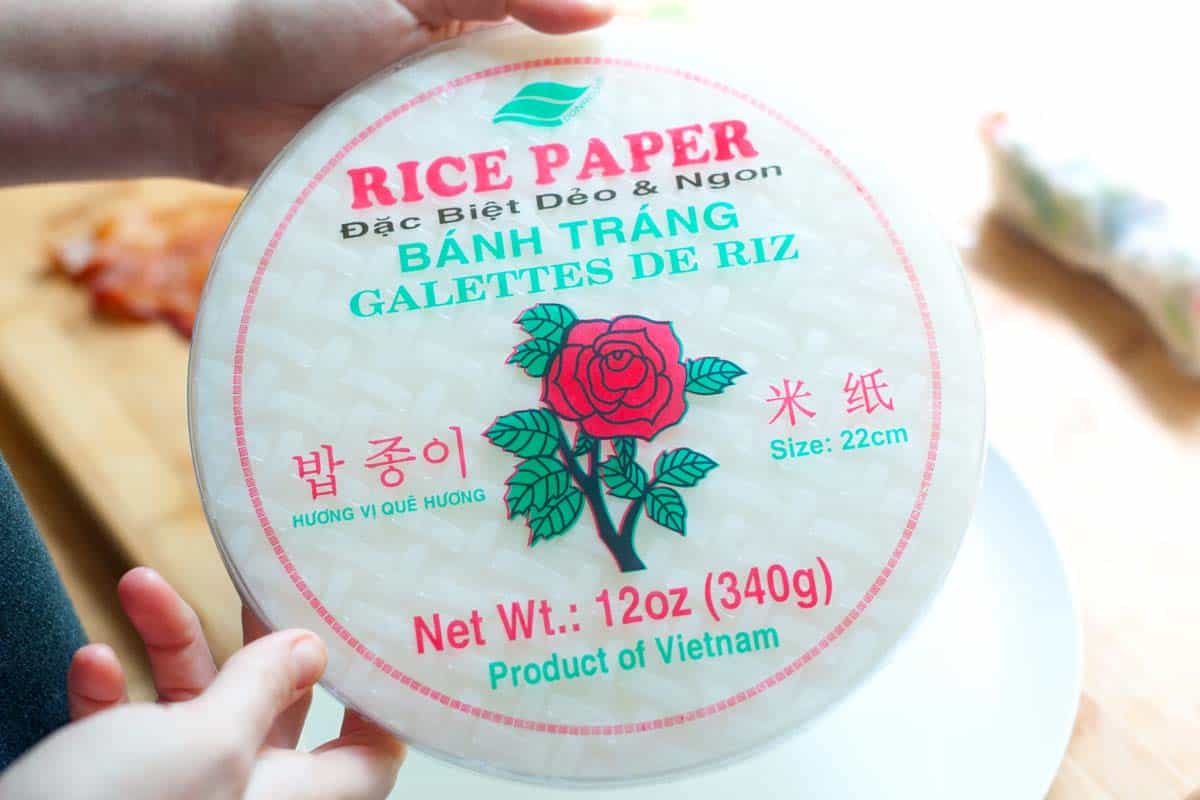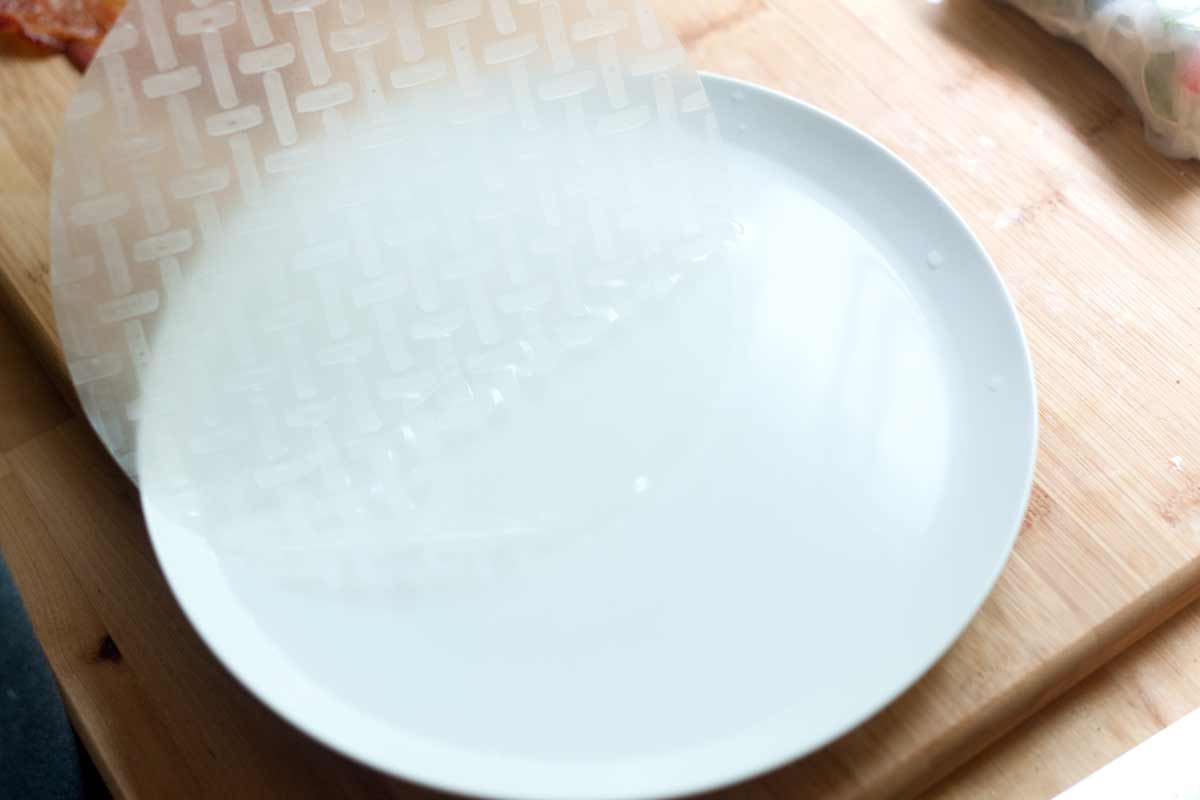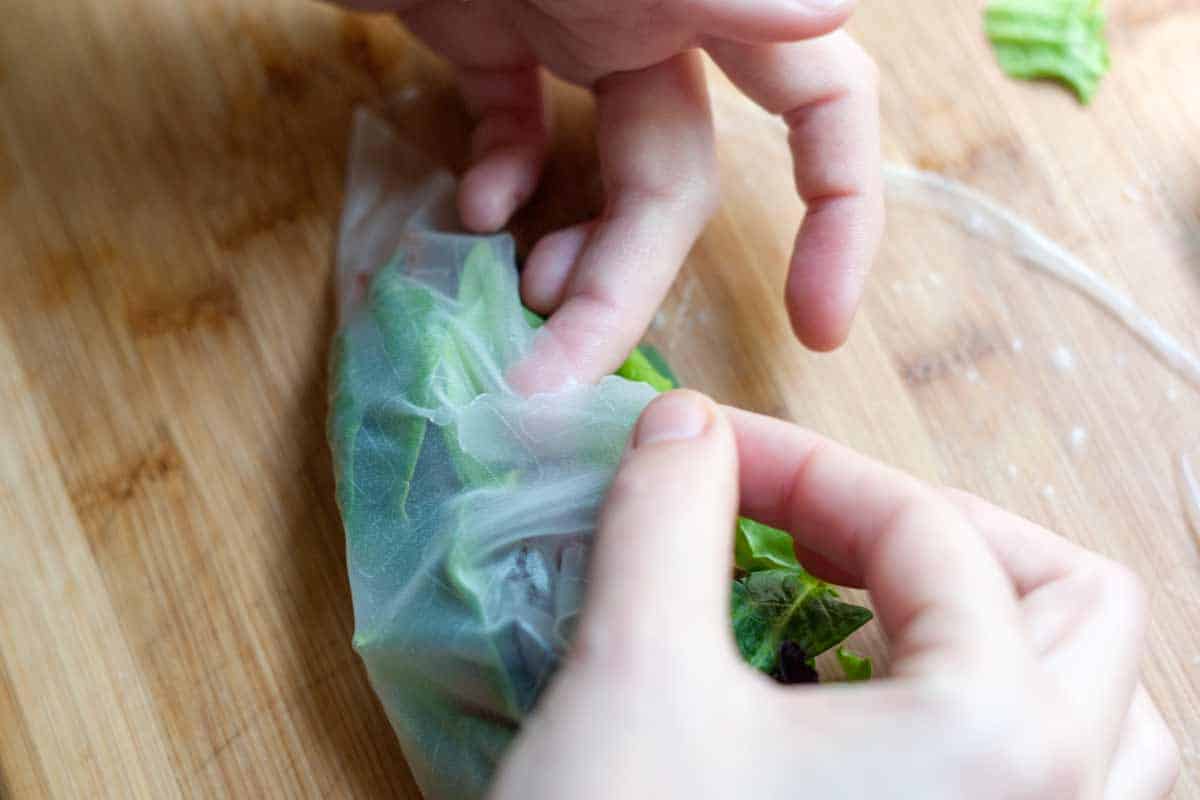How to buy rice paper wrappers. Plus, suggestions for using them, in addition to summer rolls.

What are Rice Paper Wrappers?
If you’ve ever had a summer roll (or salad roll) from a Vietnamese restaurant, you’ve eaten a rice paper wrapper. They are super thin wrappers traditionally made from rice, water and salt that can be filled with almost anything. Since they are so thin, the wrappers are almost translucent so you can see whatever is inside. They also have a nice chewiness to them.
We’ve most often seen rice paper wrappers wrapped around shrimp, pork, fresh vegetables and noodles. That doesn’t mean you couldn’t wrap them around other ingredients — we have even filled rice paper with bacon, lettuce and tomato for BLT Summer Rolls.
Buying and Storing
Depending on where you live, you might get lucky and find rice paper wrappers sold in the International food aisle of your local grocery or health food store. Otherwise, the best selection will be at Vietnamese or Chinese food market. Online is also an excellent option.

Tips for Choosing Rice Paper Wrappers
- Avoid wrappers that are made with 100% tapioca since they are trickier to wrap. Instead, look for wrappers made with rice or with a combination of rice and tapioca. (By the way, rice paper wrappers should be gluten-free. Some packages say wheat is an ingredient. It is likely an error in translation).
- I really like the 8 1/2 inch wrappers since they are easier to work with that wrappers that are smaller/larger.
- Look for the Three Ladies brand or one with a red rose on the label. We’ve had great success with these and they are widely accepted as quality options.
- If there are multiple options, choose the most expensive option. Rice paper won’t cost a lot anyway, so reaching for the option that’s 50 cents more isn’t too much of a stretch.
How to Store Rice Paper
Once the package has been opened, place it into a resealable plastic bag and store in the pantry or cupboard.
How to Use Rice Paper
Rice paper is sold in dried sheets. Before using them, you will need to rehydrate them to make them pliable.
Once rehydrated, rice paper can be eaten as is — like with summer rolls — or fried. Fresh rolls are the most common way we work with rice paper in our kitchen. It isn’t something we recommend you bake with, though. When it comes to frying, rice paper becomes incredibly crisp and light. For more tips on frying rice paper rolls, we recommend reading through Andrea Nguyen’s article.

How to Wrap Rice Paper Rolls
Wrapping rice paper is easy — just as easy as wrapping a burrito. You will also get better the more often you do it. Even so, they don’t need to be perfect!
I mentioned before that rice paper is sold in dried sheets. To make them more pliable and ready for rolling, you will need warm water.
Add warm water to a shallow dish or baking tin that is wider than the rice paper you are using. Working one rice paper sheet at a time, slide the sheet into the warm water. Leave the sheet in the water for a few seconds — anymore and it will become too soft and start sticking to itself. You are really just dipping it into the water.
Remove the moistened, but still slightly firm rice paper sheet and place it onto a flat work surface. Leave it for a minute or two — in this time the paper will become even more pliable. It is ready to fill and roll when it’s pliable and a little sticky.
Now, all you need to do is wrap. Remember, it’s just like wrapping a burrito.
- Place the filling in the middle of the bottom third of the wrapper.
- Bring the lower edge up and over the filling.
- Fold in the two sides.
- Firmly, roll the whole thing up, using your fingers to keep the fillings pushed towards the middle of the roll and tight.
When working with or rolling the wrappers, you might find one tears. If the rice paper tears a bit, don’t worry, just overlap the two torn edges and continue on like nothing happened.

How to Store Fresh Summer Rolls
Fresh summer rolls are best eaten straight away, but you can store them wrapped in plastic wrap in the fridge for a few hours. Just keep the rolls away from one another as they tend to stick to each other over time.
If you are storing overnight, you might want to add a layer of damp paper towels before the plastic wrap to keep them from drying out.










